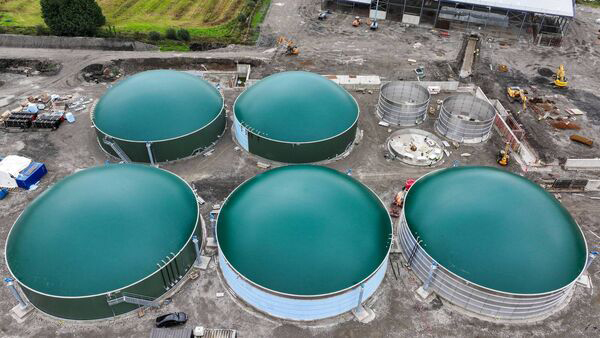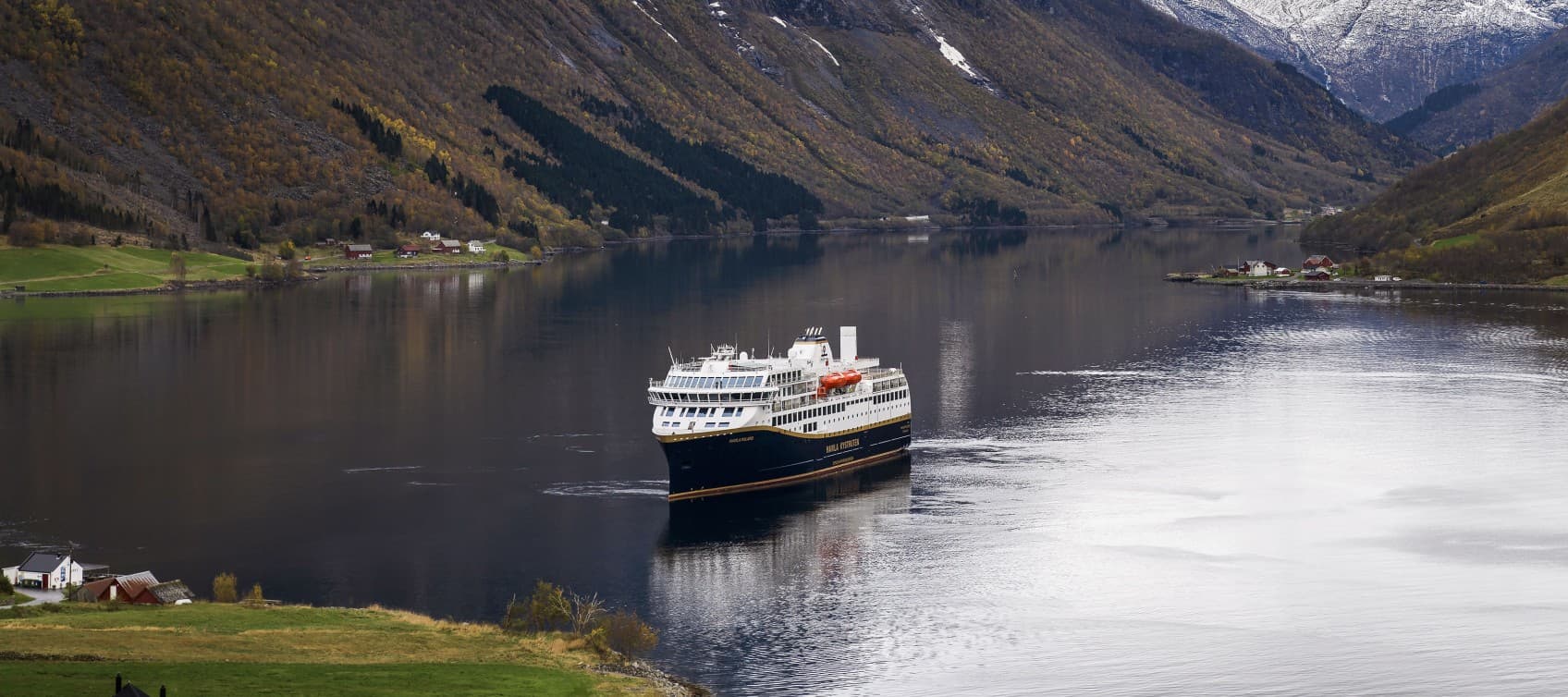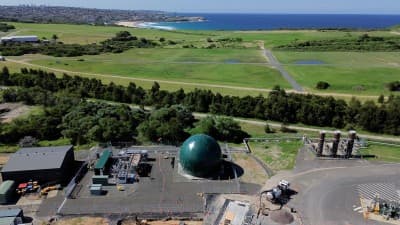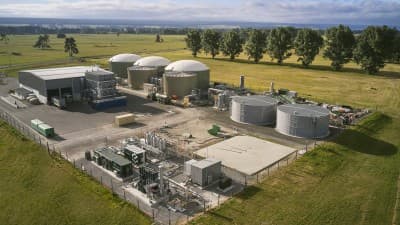Renewable gas keeps gaining momentum. Let’s take a look at some of the recent developments from around the world.
World’s first biogas-powered cruise to set sail in Norway
The first-ever biogas-powered cruise ship will set off on its maiden voyage on 30 November 2025.
The climate-neutral cruise will take a 12-day roundtrip tour of the Norwegian coastline, fuelled by a total of 350 cubic metres of liquefied biogas. The vessel, Havila Polaris, also has an onboard battery that will support its fully sustainable journey.
“This voyage demonstrates that it is possible to operate the full coastal route with minimal climate impact,” said Brent Martini, CEO of Havila Voyages. “The biogas will reduce greenhouse gas emissions for this trip by more than 90% compared with conventional fossil fuels.”

Aerial photograph of the anaerobic digestion (AD) units under construction at Evergreen’s facility in Kildare.
Ireland’s new €50m biomethane plant will power 8,000 homes
The national gas network in Ireland is shifting toward an increase in renewable gas, thanks to biomethane from a landmark €50 million plant in Kildare. Gas Networks Ireland has signed an agreement to connect the Evergreen biomethane plant to the grid once it is operational.
Currently under construction, when complete the Kildare plant will produce up to 100 gigawatt hours of renewable biomethane annually. That is enough to heat more than 8,000 homes in Ireland and will reduce the country’s CO2 emissions by almost 18,500 tonnes a year.
The project is part of Ireland’s National Biomethane Strategy, which sets out goals to create a large-scale local industry that can deliver 5.7 terawatt hours of biomethane by 2030, as part of the country’s emissions-reduction efforts.

Section of the 2025 European biomethane map.
64% growth in EU biomethane plants over four years
The 2025 European Biomethane Map has been released, showing strong growth in the sector. There are now 1,678 biomethane plants across Europe, after 122 new plants came online in 2024 and an additional 46 plants were commissioned in the first quarter of 2025. This is a 64% increase on the 1,023 plants measured in the 2021 report.
Most of the facilities (86%) are connected to the grid, which shows the vital role biomethane is playing in the European energy sector. The EU is working towards ending Russian energy imports, and generating 35 billion cubic metres of biomethane per year by 2030.
CIP plans to announce three new biogas plants
After the success of its Tønder Biogas facility, Copenhagen Infrastructure Partners (CIP) plans to announce the establishment of three more biogas plants in Spain, Belgium and the United Kingdom. It will raise more than €1 billion in funding over the next 15 months.
Tønder Biogas uses agricultural waste to produce biofertiliser, biogenic CO2 and biogas. The biogas is upgraded into biomethane and injected into the gas grid. CIP is currently upgrading Tønder to become one of the largest biogas facilities in Europe, thanks in part to Danish legislation that helped the country’s biomethane industry thrive. Biomethane now constitutes one-third of the gas in the Danish gas grid.
“New Zealand has many parallels with Denmark, including our gas network, which is on a similar scale, our agri-economy and our population,” noted James Irvine, General Manager, Future Fuels, at Clarus. “Plants of this scale could be a sign of things to come elsewhere.”
Renewable gas gains momentum in NZ
The New Zealand Government has released its Wood Energy Strategy and Action Plan, alongside a Government Statement on Biogas, signalling their support and recognition of the value that biogas brings to New Zealand.
In his Ministerial foreword, Hon. Simon Watts, Minister for Energy said, “This Government supports a renewable gas market in New Zealand. Biogas is one of these renewable energy sources that are more readily available and could strengthen our energy security, decarbonise hard-to-electrify sectors and create new opportunities for innovation and investment.”
The Minister also acknowledged that while biogas isn’t a one-size-fits-all solution, it can play a “pivotal role in creating a cleaner, more resilient energy future.”
Here at Clarus we are innovating and investing in renewable energy projects. Learn more - Future of Energy.





